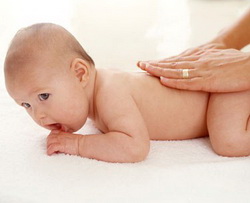IVF baby or test tube baby is the term used for offspring conceived through in vitro fertilization. The term is coined after the tube-shaped glass container called test tube which is common in many laboratories. The term in vitro means glass in Latin. This is so named because the procedure can only be done in glass containers.

IVF Background
It has been over 30 years since the first IVF baby was born. Louise Brown was born on the 25th of July 1978 in the United Kingdom. Her parents had been trying to naturally conceive for 9 years without success. In 1977, they decided to try a program developed by Robert Edwards and although it was still in its experimental stage, the couple was determined to take on the risk.
Robert Edwards was rewarded a Nobel Prize for Medicine for this process which came to be the foundation of in vitro fertilization. Much medical advancement has brought changes and higher success rates to the procedure and the risks and complications have significantly decreased as compared to 30 years ago. It has become easier, more convenient and more accessible to infertile couples worldwide.
Complications for the Mother
The procedure can have effects on both the mother and her IVF baby. For the mother, intra-abdominal bleeding and infection could occur during egg aspiration and embryo transfer. Infection can set in if sterile procedure is not observed; hence it is best to choose clinics with clean facilities to avoid such from happening. More common adverse effects of the procedure is cramping, bloating, mood swings, and abdominal pain. Also, injections can be given repeatedly in one day which can cause bruising and tenderness on the site of injection.
Drug therapy during IVF can also cause Ovarian Hyperstimulation Syndrome. Most cases will only have mild effects, however, some can severely progress. Symptoms include bloating, abrupt gaining of weight, lesser and darker urine output, vomiting, thirst and skin dryness. In severe cases, breathing difficulty can be present. This condition can be effectively treated through fluid aspiration. Furthermore, bed rest is highly needed to avoid further stress. Weight, blood pressure, blood and electrolyte count are monitored to check the progress of the condition.
Risks to the IVF Baby
Multiple pregnancy is the most common complication of IVF procedure. At least 2 embryos are transferred to the uterus to increase the chances of having a pregnancy. Sometimes more than one results to successful implantation thus leading to multiple pregnancy. This is the main reason why the current procedure is to wait for the blastocyst stage before the embryos are transferred. By waiting for the blastocyst stage, the embryologist can choose the best embryos by considering the number of cells and consistency of growth.
It has recently been found out that the IVF baby has an increased risk of low birth rate, birth defects and genetic flaws. One reason could be that the ova produced from follicle-stimulating drug therapy can be of poor quality. Also, many older women who produce fewer and low-quality ova turn to this procedure to conceive. The poor quality of eggs may lead to birth abnormalities to the IVF baby.
Despite the complications and risks, IVF has become a popular option among infertile couples as they prefer to have an IVF baby than none at all.
